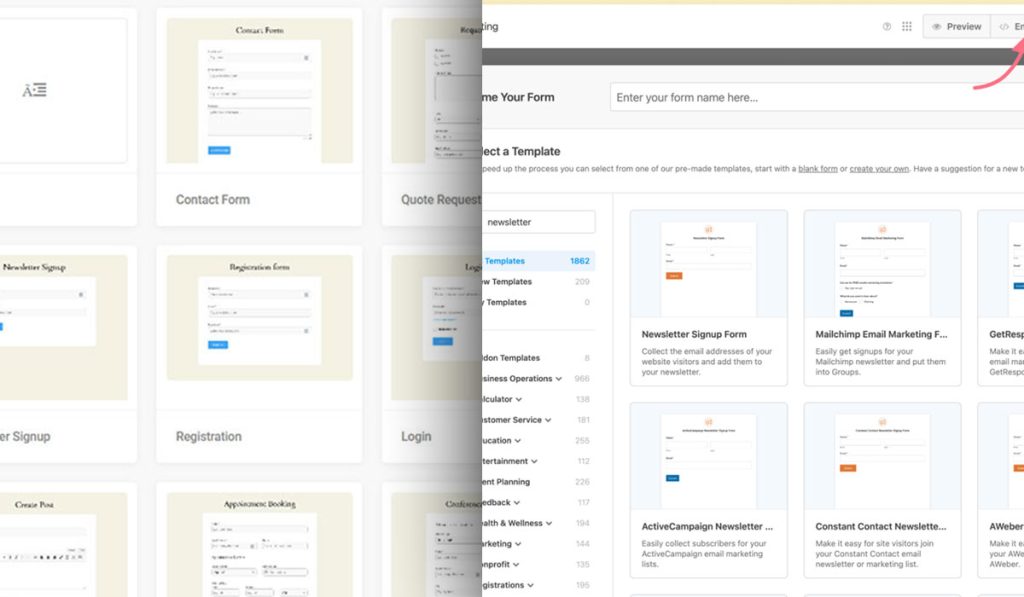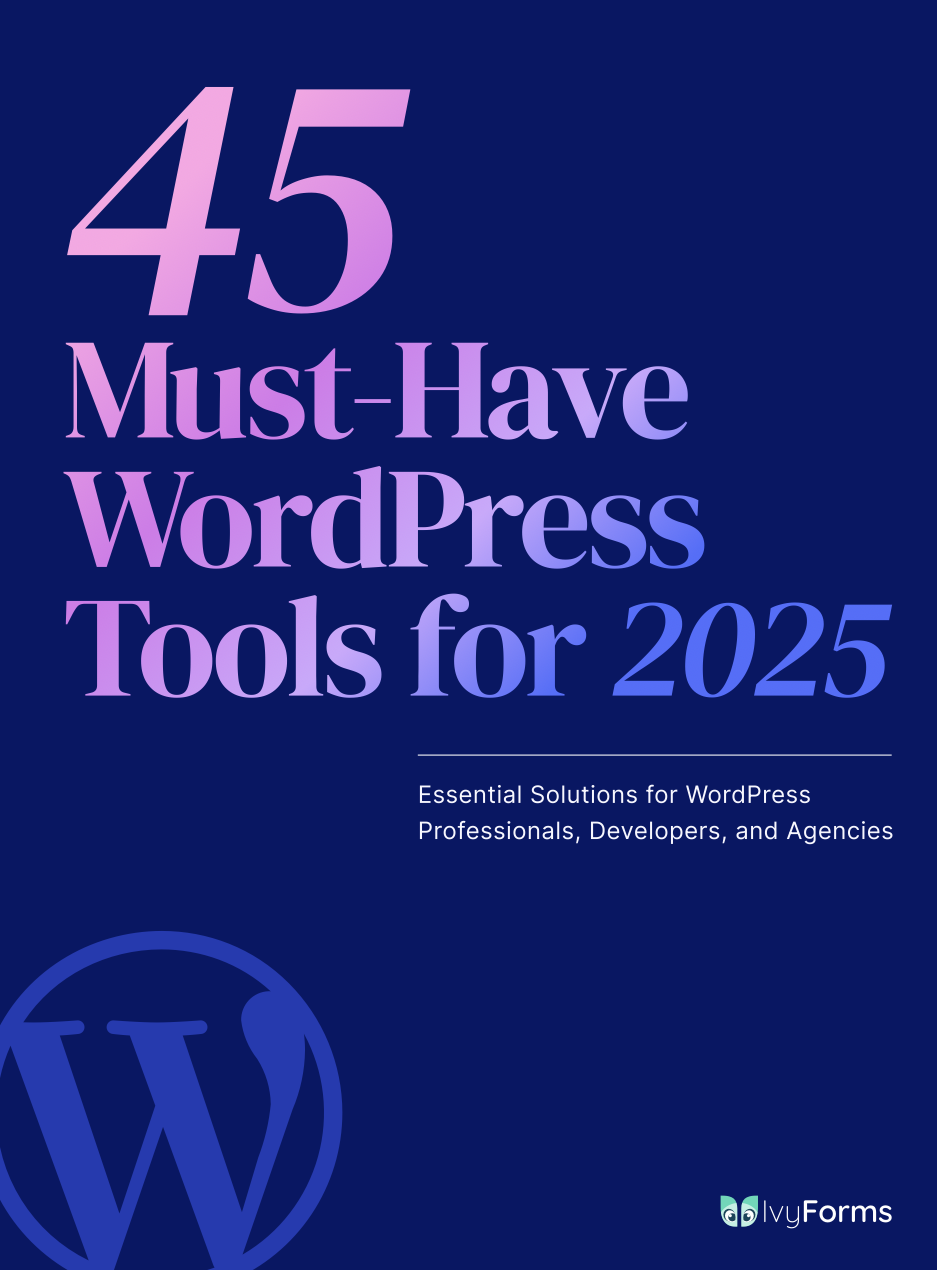Ninja Forms has served millions of WordPress sites, but its add-on costs pile up fast and performance can lag under heavy traffic. If you’re reconsidering your form builder choice, you’re…
Table of Contents
Picking the wrong WordPress form plugin costs you leads, time, and money.
Forminator vs WPForms represents one of the biggest decisions you’ll make for your site’s contact form strategy. Both drag-and-drop builders promise easy form creation, but their pricing models, feature sets, and integration capabilities differ dramatically.
This comparison breaks down everything: payment gateway support, conditional logic, quiz builders, pricing tiers, and performance impact. You’ll know which plugin fits your budget and which one delivers the features you actually need.
No fluff. Just the data you need to choose confidently.
What is Forminator?
Forminator is a free WordPress form builder plugin developed by WPMU DEV that handles contact forms, polls, quizzes, and payment collection.
The plugin works with Gutenberg, Elementor, and other page builders without requiring coding knowledge.
Users get unlimited form submissions, entries, and file uploads even on the free version.
What is WPForms?
WPForms is a WordPress contact form plugin created by WPForms LLC with both free and premium pricing tiers.
The drag-and-drop interface lets you build forms in minutes using pre-made templates.
Over 6 million websites use WPForms for lead generation, customer feedback, and payment processing.
Core Features Comparison
Form Builder Interface
Forminator:
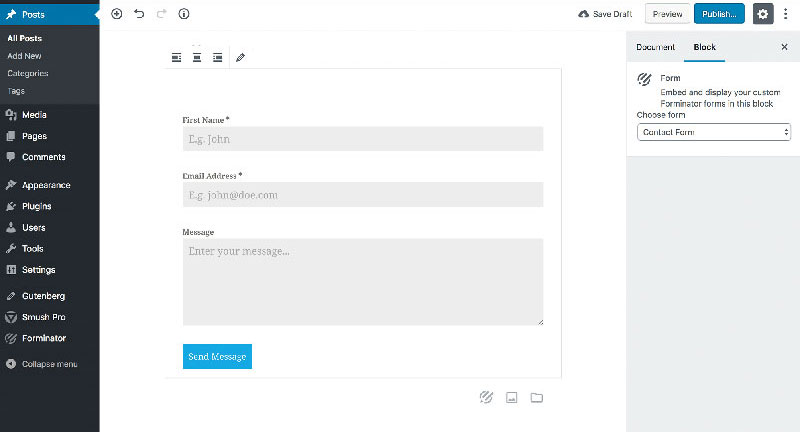
The builder uses a drag-and-drop system with live preview. Fields snap into place as you arrange them. No page refreshes needed.
WPForms:
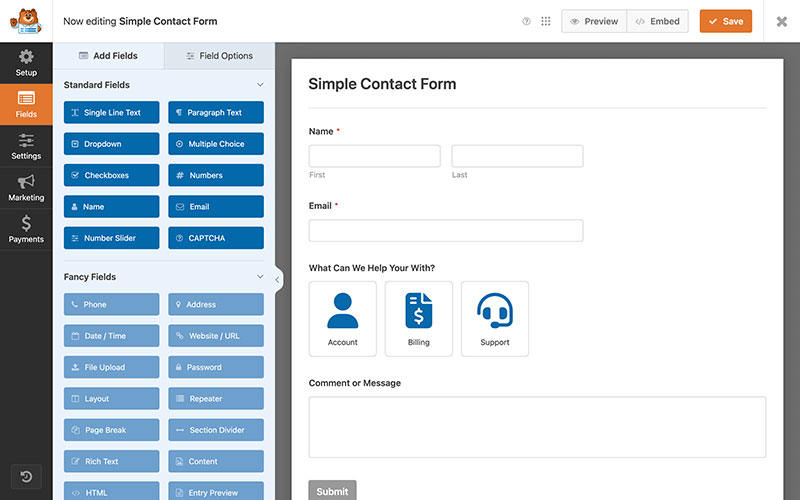
WPForms provides a similar drag-and-drop experience with instant preview updates. The interface feels slightly more polished than Forminator’s layout. Both work smoothly for basic contact form creation.
Form Templates
Forminator:
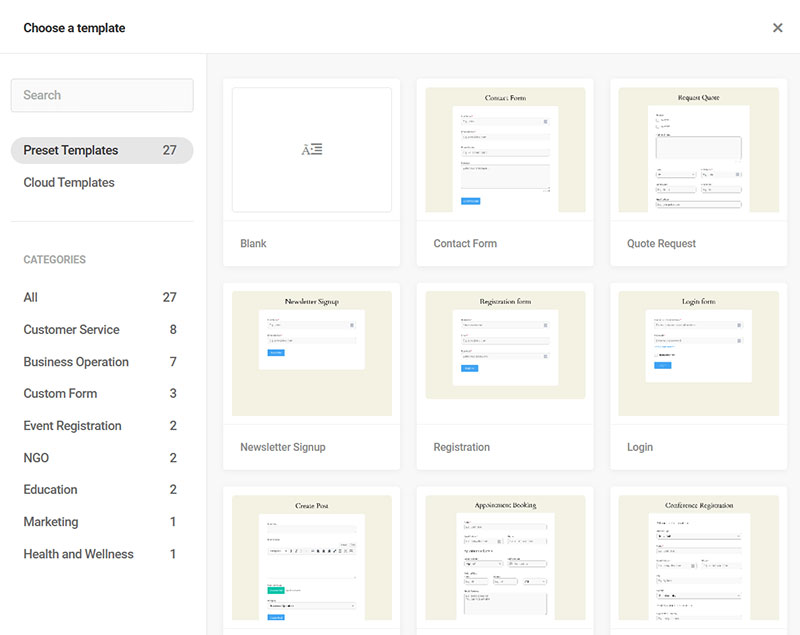
Comes with 40 pre-built templates including contact forms, quote requests, and registration forms.
Templates cover common use cases but the selection is limited compared to competitors.
WPForms:
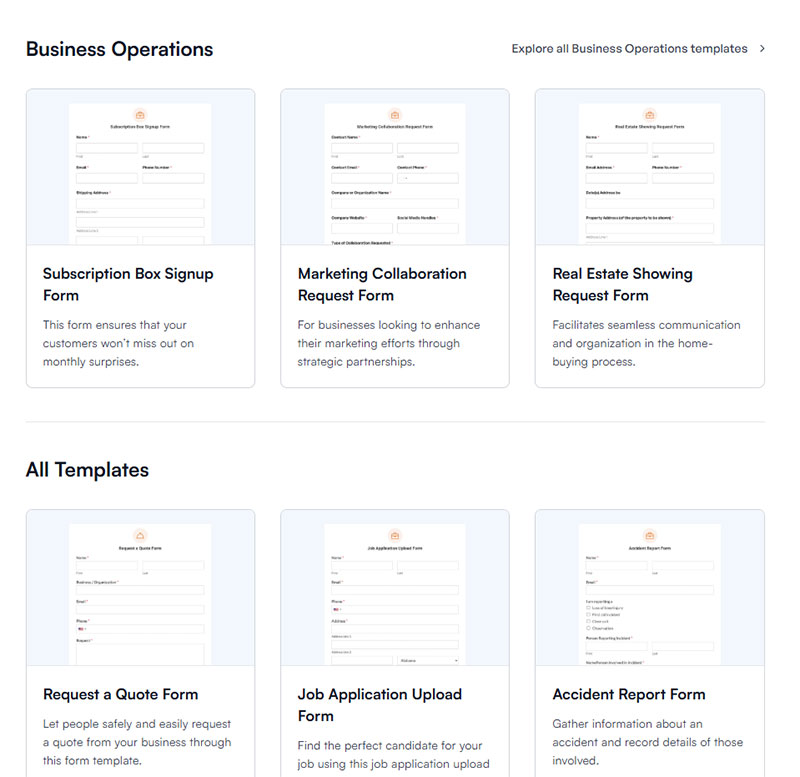
The Lite version includes basic templates. Premium users access 300+ form templates across categories like subscription forms, event registration, and payment collection. Template variety gives WPForms an edge here.
Field Types and Options
Forminator:
Supports standard fields (text, email, phone, dropdown, checkbox) plus advanced options like file uploads, date pickers, and calculation fields.
Conditional logic works on all field types in the free version.
Hidden fields, CAPTCHA, and custom HTML fields are included.
WPForms:
The free version offers basic field types. Premium unlocks survey fields, signature capture, rating scales, and geolocation.
Payment fields require the Pro license. File upload fields have size restrictions based on your plan. Calculation fields need the Business plan or higher.
Integration Capabilities
Email Marketing Integrations
Forminator:
Connects directly to Mailchimp, AWeber, Campaign Monitor, and ActiveCampaign in the free version.
Integration setup takes about two minutes per platform. Form submissions sync automatically to your email lists with proper field mapping.
WPForms:
Basic email notifications work in Lite. Marketing integrations (Mailchimp, Drip, GetResponse, ConvertKit) require paid plans starting at $49.50/year.
The Constant Contact addon needs the Plus plan minimum.
Payment Gateway Support
Forminator:
PayPal and Stripe integration comes free. Both processors handle one-time payments and recurring subscriptions. Transaction fees depend on your payment processor, not the plugin.
Product fields let you create simple order forms without extra cost.
WPForms:
Payment features start at the Pro level ($199.50/year). Stripe, PayPal, Square, and Authorize.Net are available as separate addons.
Each gateway requires its own license tier. Mixing multiple processors gets expensive fast.
CRM Connections
Forminator:
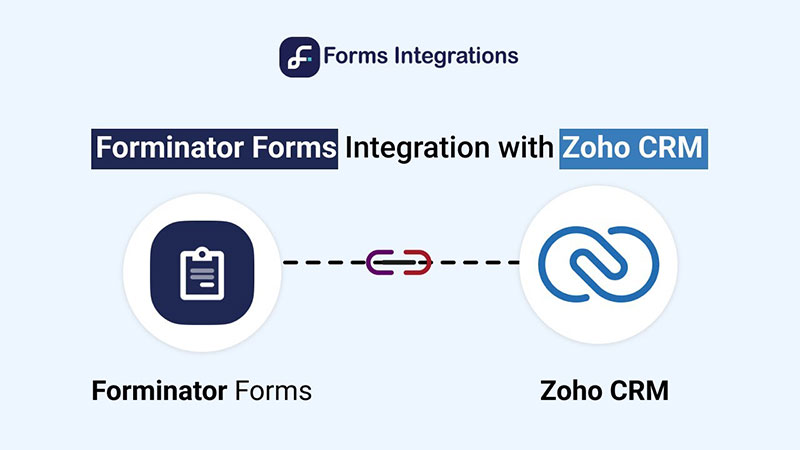
Free Zapier integration connects Forminator to 5,000+ apps including HubSpot, Salesforce, and Pipedrive.
Direct integrations available for popular CRM platforms. Data mapping works through custom fields.
WPForms:
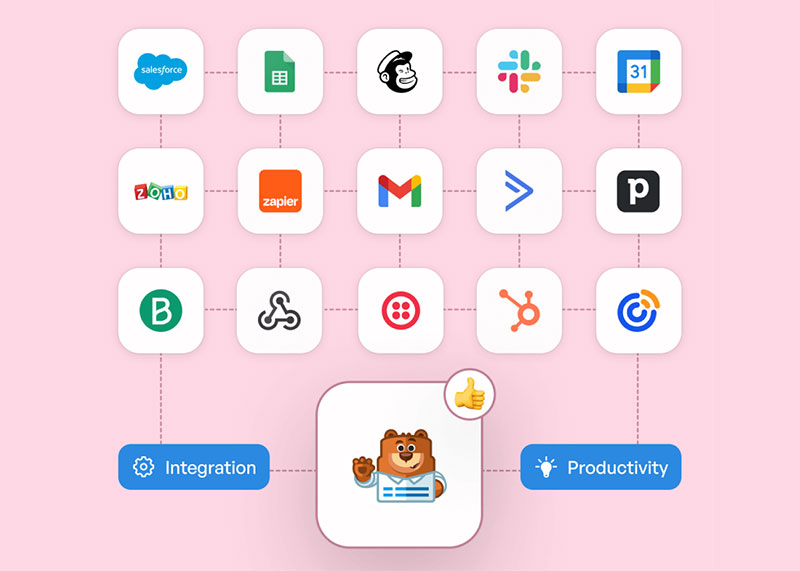
CRM integrations (Salesforce, HubSpot) only work with Elite plan ($599.50/year). The entry-level plans lack direct CRM connectivity. Zapier addon requires Pro plan minimum.
Conditional Logic Functionality
Forminator Conditional Logic
Show or hide fields based on user selections. Works with all field types including file uploads and calculations.
Create complex branching paths without upgrading to premium. Multiple conditions per field with AND/OR operators.
Logic applies to entire sections, letting you build dynamic multi-step forms that adapt to responses.
WPForms Conditional Logic
Available in all paid plans starting at Basic ($49.50/year). Not included in the free Lite version.
Set up rules to display fields based on previous answers. Single condition per field in Basic plan. Advanced conditional logic (multiple conditions, complex rules) requires Pro or higher.
Smart conditional logic helps reduce form abandonment by showing only relevant fields.
Spam Protection Methods
Forminator Security
Google reCAPTCHA v2, v3, and invisible reCAPTCHA built in. Honeypot fields catch bots without annoying real users.
IP blocking, custom validation rules, and submission limits prevent abuse. All security features free.
WPForms Security
reCAPTCHA and hCaptcha available in all versions. Custom CAPTCHA requires Pro plan minimum.
Honeypot anti-spam included free. Akismet integration needs separate subscription. Token-based form submission prevents automated attacks.
Form Types Beyond Contact Forms
Forminator Specialized Forms
Quiz Builder:
Create personality quizzes or knowledge tests with scoring. Right/wrong answers, point systems, and custom result pages. Share results on social media automatically.
Poll Creation:
Single or multiple-choice polls with real-time results. Display vote counts as percentages or numbers. Works great for audience engagement.
Survey Functionality:
Rating scales, Likert fields, and open-ended questions. Export survey data to CSV for analysis. Unlimited responses on free plan.
WPForms Form Variations
Survey forms available with Elite plan only ($599.50/year). Basic rating fields in lower tiers.
Payment forms require Pro plan minimum. Registration forms need User Registration addon. Conversational form addon costs extra on top of base license.
Pricing Structure
Forminator Cost
Free version: Unlimited forms, entries, file uploads. All core features including conditional logic, payments, integrations.
Pro version: $49/month (billed annually at $588). Includes priority support, white label options, additional integrations. Pro mainly removes WPMU DEV branding.
WPForms Cost
Lite: Free with basic features. One form at a time, limited templates, no addons.
Basic: $49.50/year (one site). Entry fields, spam protection, basic email marketing.
Plus: $99.50/year (three sites). Payment integrations, form templates library, conditional logic.
Pro: $199.50/year (five sites). Survey fields, signatures, user registration, most addons.
Elite: $599.50/year (unlimited sites). Full addon access, priority support, lifetime updates.
Renewal rates match first-year pricing. No surprise price increases.
Performance Impact
Database Queries
Forminator:
Averages 12-15 queries per form render. Stores entries in custom database tables separate from WordPress posts.
Caching reduces query load on repeat visits. Performance stays consistent with large entry volumes.
WPForms:
Runs 8-12 queries for basic forms. Lite version optimized for speed.
Premium features add query overhead. Entry management through custom tables keeps WordPress database clean.
Page Load Times
Forminator:
CSS file: 47KB minified. JavaScript: 82KB total. Both can be lazy-loaded.
Adds roughly 200-300ms to page load. Defer scripts to improve initial render time.
WPForms:
Base CSS: 38KB. JS files: 65KB combined. Lighter footprint than Forminator.
Conditional loading prevents unused scripts from loading. Performance advantage on simple forms.
User Capacity and Limitations
Forminator Limits
No entry limits ever. Unlimited form fields per form. File uploads capped by server settings, not plugin.
Free version supports unlimited active forms. No artificial restrictions on submissions per month.
WPForms Limits
Lite version: Limited to basic field types. One active form recommended though not enforced.
Paid plans: No submission limits. Field types restricted by plan tier. File upload sizes vary by hosting environment and plan level.
Notification System
Forminator Notifications
Multiple email recipients per form. Conditional notifications based on field values.
SMS notifications through Twilio integration (free). Webhook support for external systems. Auto-responder emails with custom templates.
WPForms Notifications
Smart conditional notifications in paid plans. Send different emails based on user selections.
CC and BCC fields standard. Custom email headers, reply-to addresses. Email templates with visual editor in Pro+.
Form Analytics and Reporting
Forminator Analytics
Built-in conversion tracking. View submission rates, abandonment points, popular responses.
Poll and quiz results display in real-time dashboard. Export all data to CSV or Excel. Entry management includes search, filter, sort by any field.
WPForms Analytics
Basic entry logs in all versions. Form abandonment tracking requires Pro plan.
Geolocation data in Elite only. Integration with Google Analytics through custom code or paid addons. Entry filtering limited compared to Forminator.
Mobile Responsiveness
Forminator Mobile Experience
Fully responsive out of the box. Touch-optimized field controls (date picker, dropdown).
Forms adapt to screen width automatically. File upload works smoothly on mobile cameras. Multi-column layouts collapse to single column.
WPForms Mobile Experience
Mobile-first design approach. All templates responsive by default.
Touch targets sized appropriately (minimum 44x44px). Payment forms optimized for mobile checkout. Step indicators clear on small screens.
Accessibility Compliance
Forminator Accessibility
WCAG 2.1 Level AA compliant. Proper ARIA labels on all fields.
Keyboard navigation works throughout. Screen reader tested with JAWS and NVDA. Error messages announced properly.
WPForms Accessibility
Meets WCAG 2.0 standards. Focus indicators visible on all interactive elements.
Form validation errors accessible to screen readers. Label associations correct. Skip links available for multi-step forms.
Customer Support Options
Forminator Support
Free users: Community forums, documentation. Response times vary.
Pro users: Live chat (24/7), email support, priority ticket system. Average response under 4 hours. Access to WPMU DEV community with 1,200+ members.
WPForms Support
Lite: Community forum only. No direct support channel.
Basic through Elite: Email support with priority based on plan. Basic gets standard support, Elite gets 24-hour response guarantee. Live chat for Pro and Elite during business hours.
Database Storage Method
How Forminator Stores Data
Creates custom tables: wp_frmt_form_entries, wp_frmt_form_entry_meta. Keeps WordPress database organized.
Entry data stored separately from posts and pages. Efficient retrieval for large datasets. Automatic cleanup options prevent database bloat.
How WPForms Stores Data
Uses custom tables: wp_wpforms_entries, wp_wpforms_entry_fields, wp_wpforms_entry_meta.
Payments tracked in separate table. Entry retention can be set (delete after 30/60/90 days). Compatible with all major backup plugins.
Multi-Step Form Capabilities
Forminator Multi-Step Forms
Page breaks split long forms into steps. Progress bar shows completion percentage.
Save and continue feature lets users resume later (Pro only). Each step validates before moving forward. Conditional pages appear based on earlier responses.
WPForms Multi-Step Forms
Available in Plus plan ($99.50/year) and higher. Unlimited steps per form.
Progress indicators include percentage, circles, or custom text. Previous/Next button text customizable. Users can navigate back to edit answers.
File Upload Handling
Forminator File Uploads
Accepts any file type (configurable by admin). Size limits set at server level, typically 2MB-10MB.
Files stored in WordPress media library or custom directory. Multiple file uploads per field. Automatic file validation prevents malicious uploads.
WPForms File Uploads
File upload field available in Plus plan and above. Restrict by file type (images, PDFs, documents).
Modern file uploads show progress bars. Files integrate with media library. Maximum file size depends on hosting configuration.
Calculation Fields
Forminator Calculations
Complex formulas supported: addition, subtraction, multiplication, division. Reference any number field in calculations.
Real-time updates as users type. Display calculated totals before submission. Perfect for quote requests, order forms, pricing calculators.
WPForms Calculations
Payment calculations built into Pro plan. Add, subtract, multiply field values.
User-defined formulas with custom syntax. Calculate totals, tax, discounts automatically. Results can trigger conditional logic.
White Label Options
Forminator Branding
Free version shows WPMU DEV branding in form footer. Pro removes all plugin branding.
Custom CSS classes for complete styling control. Replace default messaging with your own.
WPForms Branding
Lite shows WPForms credit link. All paid plans can remove branding.
Agency Bundle ($599.50/year) allows white labeling. Custom form styling without code in Pro+.
GDPR Compliance Features
Forminator Privacy Tools
GDPR consent checkboxes with custom text. Store user consent with timestamp.
Right to erasure: Delete user data on request. IP address anonymization option. Data retention policies configurable. Export user data to comply with access requests.
WPForms Privacy Tools
GDPR Agreement field type in all plans. Cookie disable option prevents tracking.
Entry retention schedules (auto-delete old entries). Personal data export via WordPress privacy tools. Disable user details collection (IP, user agent).
Translation and Localization
Forminator Languages
Translation-ready with 15+ language packs. RTL support for Arabic, Hebrew.
Compatible with WPML, Polylang, TranslatePress. Custom translations possible through .po files.
WPForms Languages
Available in 20+ languages. RTL fully supported.
Works with major multilingual plugins. String translation through WordPress dashboard. Form-specific language selection in Pro+.
Developer Resources
Forminator Development
100+ hooks and filters for customization. REST API access to form data.
Code examples in documentation. GitHub repository public for bug reports. Action hooks for every form event (submission, validation, completion).
WPForms Development
Developer-friendly with extensive filter hooks. Custom addon creation documented.
Template override system for advanced customization. Snippets library available. API access in Elite plan for external integrations.
Migration Between Plugins
Moving from WPForms to Forminator
No direct migration tool exists. Manual form recreation required.
Export WPForms entries to CSV, import to Forminator. Field mapping must be done manually. Conditional logic rules need rebuilding. Time-intensive for complex forms.
Moving from Forminator to WPForms
Manual migration only. Export Forminator data as CSV.
Rebuild forms in WPForms interface. Entry import possible with custom scripting. Payment history doesn’t transfer between platforms.
Which Form Plugin Fits Your Needs
Choose Forminator if:
Budget matters. You need quizzes and polls included free. Complex conditional logic without paying extra. Unlimited everything from day one.
Choose WPForms if:
You prefer polished UI over features. Standard contact forms are enough. You’re already invested in their ecosystem. Support response time critical to your business.
Budget under $100/year: Forminator free version beats WPForms Basic ($49.50/year) on features. WPForms wins on interface polish.
Budget $200+/year: WPForms Pro ($199.50) vs Forminator Pro ($588). Consider whether WPForms’ addon library justifies the eventual cost as you add features.
High-volume sites: Both handle large submission counts. Forminator’s unlimited free tier better for testing and staging environments.
Agency use: WPForms Elite ($599.50) provides better client management. Forminator Pro ($588) works but fewer white-label options.
Payment forms: Forminator includes payment processing free. WPForms locks it behind $199.50/year minimum. Clear winner for budget-conscious stores.
Survey needs: Forminator includes surveys free. WPForms requires Elite plan ($599.50). Cost difference significant for research-heavy sites.
Both plugins integrate with popular page builders (Elementor, Divi, Beaver Builder). Both support WordPress forms creation without coding. Neither requires separate hosting or external services.
Test both plugins on staging sites. Build your most complex form in each. Measure performance, check mobile display, test integrations before committing.
FAQ on Forminator Vs WPForms
Is Forminator completely free?
Yes. Forminator’s free version includes unlimited forms, entries, conditional logic, payment processing, and email marketing integrations. Pro version ($588/year) adds priority support and white labeling. Most users never need to upgrade.
Does WPForms Lite have limitations?
WPForms Lite restricts you to basic field types and templates. No conditional logic, payment processing, or marketing integrations. Paid plans start at $49.50/year for essential features like form templates and spam protection.
Which plugin is better for payment forms?
Forminator wins. Free version includes PayPal and Stripe integration with no restrictions. WPForms locks payment features behind Pro plan ($199.50/year minimum). Cost difference significant if you’re processing transactions.
Can I build quizzes with WPForms?
No. WPForms doesn’t offer quiz functionality in any plan. Forminator includes quiz builder free with personality quizzes, knowledge tests, scoring systems, and result pages. Also includes polls and surveys.
Which has better conditional logic?
Forminator provides full conditional logic free with multiple conditions, AND/OR operators, and complex branching. WPForms requires paid plans starting at $49.50/year for basic conditional logic, Pro for advanced rules.
Does Forminator slow down my site?
Both plugins perform well. Forminator adds 200-300ms load time (CSS: 47KB, JS: 82KB). WPForms is slightly lighter (CSS: 38KB, JS: 65KB). Difference negligible on modern hosting. Both support lazy loading.
Can I migrate from WPForms to Forminator?
Manual migration only. Export WPForms entries to CSV, rebuild forms in Forminator interface. No automatic import tool exists. Conditional logic and integrations require manual reconfiguration. Time-intensive for complex forms.
Which plugin offers better support?
WPForms provides tiered support: Lite gets forums only, paid plans get email support, Elite gets 24-hour response. Forminator Pro includes 24/7 live chat plus WPMU DEV community access. Free users limited to forums.
Are both plugins GDPR compliant?
Yes. Both include GDPR consent checkboxes, data retention controls, IP anonymization, and user data export. Forminator offers these features free. WPForms includes them across all plans including Lite version.
Which is more affordable long-term?
Forminator’s free version beats WPForms Basic ($49.50/year) on features. For premium needs, WPForms Pro costs $199.50/year versus Forminator Pro at $588/year. Choose based on required features, not just price.
Conclusion
The Forminator vs WPForms decision comes down to budget and feature priorities.
Forminator delivers unlimited form submissions, quiz builder, poll creation, and payment gateway support without spending a dollar. Perfect for bootstrapped sites needing advanced functionality immediately.
WPForms offers polished interface design, extensive template library, and predictable pricing tiers starting at $49.50/year. Better choice if you value support quality and professional aesthetics over feature depth.
Both plugins handle contact form creation, spam protection, and CRM integration effectively. Neither requires coding knowledge or complex setup processes.
Test both on staging sites. Build your actual forms, not demos. Measure page load times, check mobile display, verify integration compatibility.
Your WordPress form plugin affects lead generation for years. Choose based on real requirements, not marketing promises.


